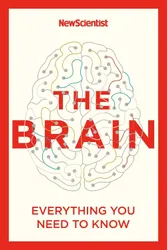This book claims to be able to help you improve your thinking in various ways, and understand more about how your brain works. It’s organised into sections covering things like perception, intelligence, consciousness, creativity, and memory. Within each section, the book is written in very short chapters, each on a single topic, that read like short magazine articles. I wondered if it had originally been published as a column in New Scientist magazine, but it doesn’t say so.
As well as information, there are a few pages containing puzzles and questions that are quite fun to do. Other than the puzzle sections, there aren’t any diagrams in this book. In a book on the brain, I would expect at least one of those diagrams of the different brain regions, even though I’ve seen this plenty of times in other books!
The book is engagingly written and easy to read, but the content of the book is fairly lightweight, mostly stays in the realm of pop psychology, and doesn’t go into a lot of detail on each topic. There isn’t much on the science of how the brain actually works and I didn’t find many ideas here that I hadn’t already encountered elsewhere. But the topics are very well written and explained, and there were still a few things that were new to me. It does at least approach things from a fairly scientific perspective, and doesn’t stray into urban myths about psychology and the brain that you might find elsewhere.
If you haven’t read much of this kind of thing, you may find the book more useful and worthwhile than I did. There is a decent section at the back of the book for further reading if you want to go into more detail on any of the topics. So it could be a good starting point for those interested in the brain and psychology with very little existing knowledge. But honestly, if I’m mentioning the further reading section as a positive, that should tell you there wasn’t all that much in this book for me!
